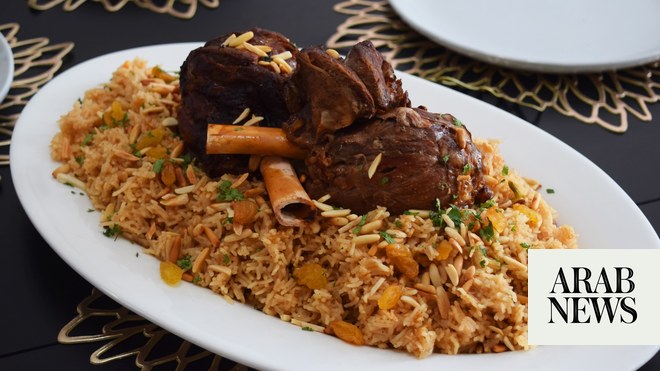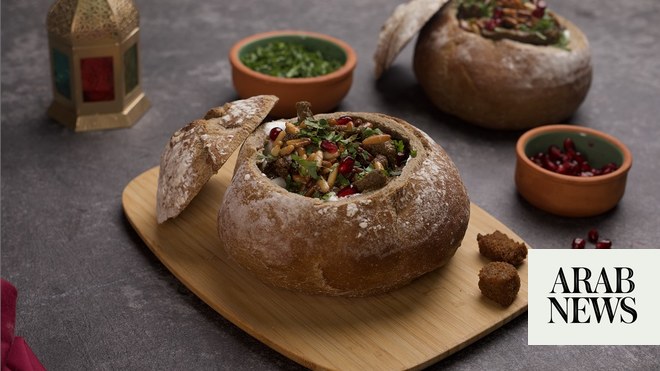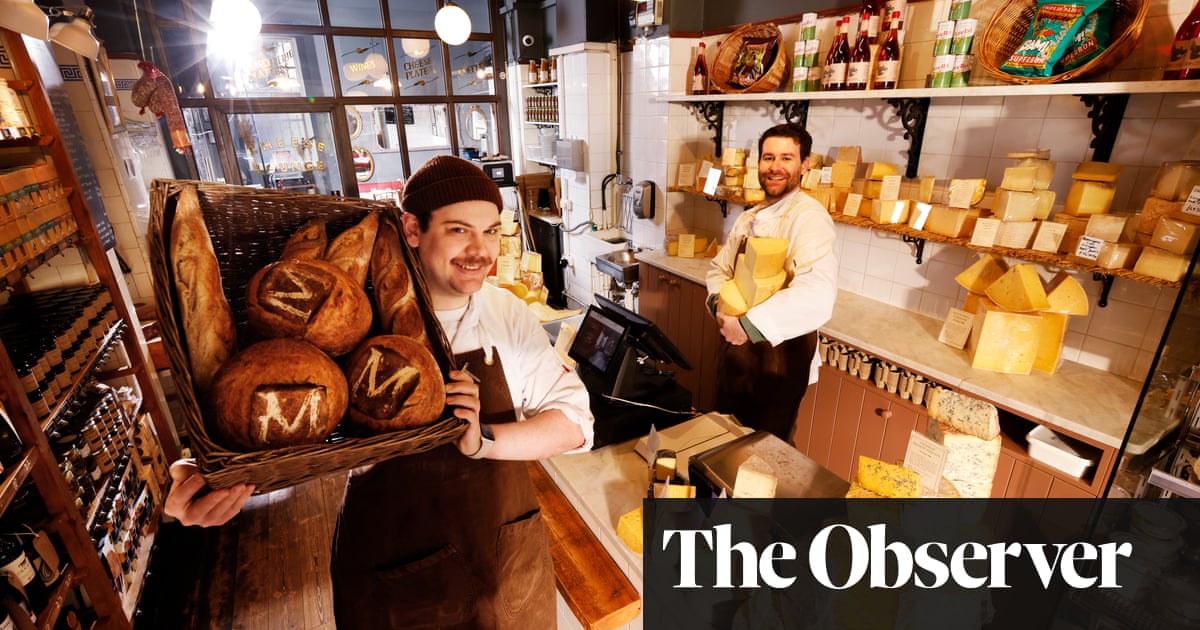
Pasta with pesto alla Genovese
Niklas Ekstedt, owner of Ekstedt, Stockholm
Pasta with pesto alla Genovese is definitely a favourite dish of mine. I really enjoy the simplicity of using just a few ingredients but it is still so tasty and has a deep flavour. Start by boiling potatoes and green beans in salted water while simultaneously cooking the pasta – spaghetti or linguine work best. You can make your own pesto by blending garlic, fresh basil and pine nuts with parmesan and olive oil. At home, I make a Swedish version with a variety of weeds from my garden, such as chickweed, nettles, hazelnuts, local aged cheese and cold-pressed rapeseed oil. Once the pasta and vegetables are cooked, drain and combine with the pesto before serving.
Bigoli in salsa (bigoli with anchovies and onions)
Russell Norman, owner of Polpo, London and Brighton
The first time I had this dish was in a tiny little bacaro – a Venetian wine bar – probably the size of a standard suburban bathroom, with no seats. Now, it’s my family’s favourite pasta dish. It’s very specifically Venetian and something I always try to eat when I’m there, although it’s incredibly simple to make yourself. It’s like a thrilling taste of the sea.
Bigoli is a type of spaghetti made with buckwheat, but you can use normal spaghetti, too. For two people, roughly chop two large onions and gently sauté in a couple of glugs of olive oil for 25 minutes. You want them to go really glossy and lose their structure. Then take a tin or two of anchovies and press them into the onions – they sort of disappear – to create a wonderful pale sauce. You could add a splash of wine at this point. Separately, cook your pasta, then add to the anchovy sauce along with a cup of the pasta water. Mix thoroughly, add fresh parsley and serve with a twist of black pepper.
Spaghetti with langoustines
Rachel Khoo, chef, writer and host of Simple Pleasures
When I’m on holiday, the last thing I want to do is be looking in a cookbook and trying to follow a recipe – I just want to throw everything in a pan, toss toss toss, easy peasy. I remember eating this dish on my first trip to Sweden: langoustines, cooked in butter with fresh parsley, with spaghetti, olive oil and a squeeze of lemon. No cheese – the Italians say you shouldn’t put cheese and seafood together anyway. How long you cook the langoustines depends on their size, so I just eyeball it. I love butter, so I used a good generous knob, salted. If you don’t have fresh parsley you can use chives. Squeeze your lemon over at the end – not at the beginning, because it evaporates.
I cook the langoustines whole, in their shells, and then toss the spaghetti or linguine through the sauce you’ve created. It’s a little bit messy but that’s holiday food for you – you’re not in a rush. You can revel in the pleasure of eating with your fingers. Pairing with a nice crisp cold glass of rosé is always good, too.
Orecchiette with cime di rapan (turnip greens)
Masha Rener, Head Chef at Lina Stores, London
My husband’s grandmother is from Puglia and taught me how to make this orecchiette in Foggia style. This recipe is with the vegetable cima di rapa, the green top part of a turnip, boiled, then sautéed in extra virgin olive oil with garlic and chilli flakes. If you want, you can also add sausage or anchovies. This dish reminds me of being with family, back to times where we used to get together and harvest olives in November – we used to sit down and eat this orecchiette in the evenings. This is still one of my favourite dishes to have when I visit Puglia.
Tagliatelle bolognese
Luca Conreno, chef and co-owner at La Lanterna, Glasgow
The dish I remember most from eating in Italy with my grandmother is bolognese with fresh tagliatelle. The pasta can be made using 1kg 00 flour, eight eggs and a bit of salt. You mix them together in a big bowl until you have a nice dough, then roll out and cut into ribbons. To make the bolognese sauce, I would use half pork mince and half beef mince (about 500g total). Add chopped onions, carrots and celery to the meat and fry with olive oil. After about 10 minutes, add a small glass of red wine and let it evaporate. Then, add chopped tomatoes or passata. Then cook for another 30 minutes. What really reminds me of Italy is tying a sprig of rosemary and three bay leaves together with string and adding it to the simmering bolognese sauce. My grandmother would tie the end of the string to the lid of the pot so she could pull it out like a fisherman. Fresh tagliatelle cooks very quickly so, after one minute of cooking in salted water, drain the pasta and add to the cooked sauce. Then, add two tablespoons of grated parmesan – this glues it all together.
Pasta e fagioli con le cozze (pasta with beans and mussels)
Simona Di Dio, co-owner and chef at Bottega Caruso, Margate
This is something we ate on our first holiday together as a family, in Castellabate on the Cilento coast. It was a very warm day and I was sceptical about eating pasta – I wanted something light and fresh, but I actually loved this dish so much. In the south of Italy it is quite common to have pasta and pulses for lunch. It’s filling and nutritious but inexpensive. In Campania, it’s traditional to add mussels, too.
Since then, I have often recreated this dish at home. For two people, it’s 100g of dried cannellini beans, soaked overnight. Then, they’re cooked in plenty of water with a stick of celery, carrot, a few cherry tomatoes and a clove of garlic, for an hour or so. In a pan, sauté a clove of garlic in oil for five minutes before adding the mussels, which have already been cleaned. Put the lid on and cook on a high heat for 5-10 minutes until they open, then let them cool and de-shell (leaving a few in their shells for decoration). Keep the liquid from the pan. In another pan, sauté garlic, a stick of celery and parsley with a big handful of cherry tomatoes. Remove the celery, garlic and parsley before adding the beans and the mussel stock, then cook for 10 minutes on a low heat. Halfway through, add the mussels, salt and pepper, and chopped parsley. Meanwhile, cook the pasta (a short pasta is best) al dente, add it to the sauce, then serve.
Tortellini in brodo (broth)
Chris Leach, chef and founder of Manteca, London
This is a classic dish from Bologna with tiny meat-filled pastas. The tortellini are very small – you can get eight to 10 on a spoon – and there are little pasta shops all over the city which specialise in making them. Each one is supposed to weigh 2g. I’d had this dish in restaurants I’d been working in over the years, but I had them properly, in Bologna, more recently and it was really special. I like it when the broth is quite rich and you really taste the nutmeg and the mortadella in the pasta. To make this yourself, you could just roast sausages in the oven, then puree them with some parmesan cheese, nutmeg and black pepper. If you were making fresh pasta, this would be your filling. Then, the pasta is served in a chicken broth (which you can make using leftover chicken bones, seasoned with salt and garlic).
Orecchiette with braciole (beef rolls)
Alex De Martiis, co-owner of Sugo Pasta Kitchen, Manchester
This dish is quintessential Puglia. I’ve got family there and there are loads of memories attached to it – it’s a very evocative dish. You’ll find it being eaten in households all over rustic towns such as Ceglie Messapica. Braciole is rolled beef – so it’s essential that you use the right cut. I tend to go for skirt steak, as this will have some fat on it and is perfect for slow cooking. You have to flatten it really thin and then stuff it; the classic stuffing mix is breadcrumbs soaked in milk, with parsley and garlic. Lay the skirt steak out and lay a cured meat, such as prosciutto, on top of it. Then you add a little bit of stuffing, roll it up and tie it with string. Then brown the meat in a hot pan. The sauce is basically a ragu: onion, garlic, celery, carrot. Return the braciole to the pan with a load of red wine, let that bubble away and add tomatoes. You want it to simmer for 2-3 hours. Then you cook your pasta – fresh orecchiette is best. Remove the braciole from the pan, stir the pasta through the sauce, then serve with the braciole on top or on the side with a load of parmesan.
Zucchini (courgette) carbonara
Lara Boglione, managing director at Petersham Nurseries, London
Zucchinis are such a summer vegetable and this dish always transports me to the sunshine. You want the nice little baby courgettes, with their flowers if possible. Cut them finely, and fry along with the flowers and chunks of garlic – I like to add quite a lot – in olive oil. They’ll go soft and the edges will start to brown. Simultaneously, add pasta to salted water and boil – I think this recipe works best with spaghetti. Take a cup full of the pasta water and add to the bowl from which you’ll be serving your pasta and add a generous amount of parmesan, a little black pepper and olive oil. Mix so that it becomes a saucy paste. Add the pasta and the zucchini to the bowl and mix. You can serve it like that, which is very delicious, or if you want to be ultra indulgent you can mix in an egg yolk. It’s really good.
Date night prawn pasta
Nicholas Balfe, founder and chef director of Salon, Levan and Larry’s
Prawn linguine reminds me of evenings spent dining by the seaside in southern Italy. This is a good one for a date night as the prawns make it feel a bit more fancy, but it’s quick and easy to prepare so you’re not spending the whole time cooking and cleaning up. Get a skillet or frying pan medium hot with plenty of olive oil. If you are using dried pasta, get it on to boil now. Add some shallots and garlic and sauté with a pinch of salt for about three minutes. Add shelled prawns, season with salt, pepper and chilli flakes, stir everything to combine, and leave to sizzle for another couple of minutes before turning the prawns over, which should have turned pink.
Add cherry tomatoes and leave for another minute. If you’re using homemade/fresh pasta, get it in to boil now and cook until al dente, which will only take 1-2 minutes. Add white wine, turn the heat up and let everything bubble away for at least another minute while you grate in the lemon zest. When the pasta is cooked, lift it out of the water and into the skillet pan with prawns, etc. Add a knob of butter and squeeze of lemon and stir everything to combine. Add a little of the pasta water if you want the sauce wetter, before folding through torn basil leaves. Serve immediately with the rest of the white wine.
The Guardian aims to publish recipes for sustainable fish. For ratings in your region, check: UK; Australia; US.












